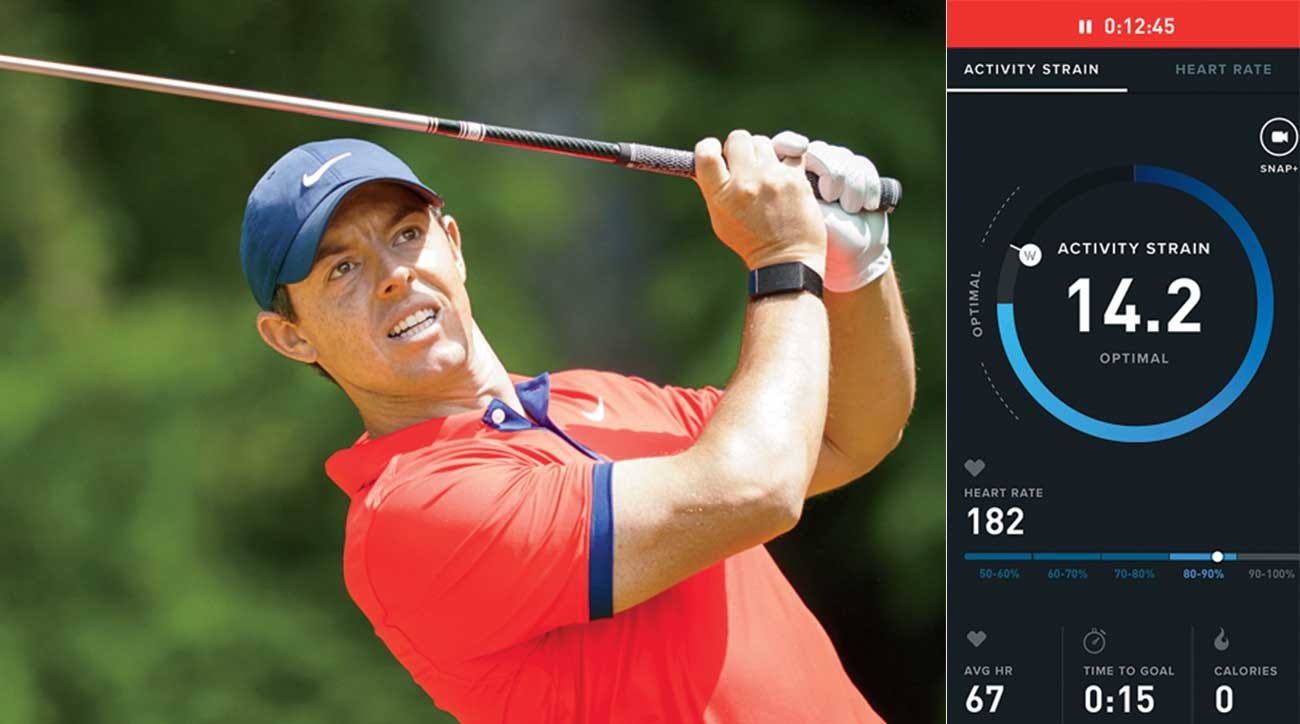WHOOP
How a fitness band has changed my perspective on professional athletes in less than a week

For those of you who haven’t heard, WHOOP is taking over the sports world. Athletes from all sports like Michael Phelps, LeBron James and Patrick Mahomes to golfers like Justin Thomas, Dustin Johnson and Rory McIlory are wearing this fitness band to learn about their body to help them perform their best when it matters most. The PGA Tour is using it to track coronavirus too! It is quite impressive and continuing to gain traction in the sports world. Here’s why…
The WHOOP band collects your body’s data using three main metrics. First, is the strain you put on your body on a scale of 1-21 each day. The optimal strain comes from your recovery and sleep so it varies person to person and day to day. Second, is just that, your recovery. WHOOP takes your recent strains and sleeps to determine how recovered your body is (given in a percentage). The more recovered you are, the more strain your body can withstand. Lastly, WHOOP tracks your sleep. It tracks exactly when you went to bed and when you woke up along with your breathing and disturbances throughout the night. Before bed, it gives you an ideal amount of time to sleep based on what you want your performance the next day to be.
Naturally, I had to test it for myself so I purchased an 18 month membership and will not be taking off this bracelet until my 24th birthday. Therefore, I will be a well-oiled machine in a year and a half so watch-out, world. Seriously though, I am 5 days in and my thoughts are as follows:
1: It is easy to use
When it came in the mail, the directions were simple; the bracelet is easy to put on and adjust to the needed size. I thought that the charger, bluetooth set-up and technology part in general may be unnecessarily complicated. I was nervous that the numbers on the app might be puzzling too. Turns out I was wrong on both counts, especially the second part. The app describes (in normal people terms), what each number means for your health and I was definitely skeptical of that when starting.
2: Apparently, I barely sleep
I thought of myself as a sleeper; I am one to go to bed early and I am the person who can hit the pillow and be out in two minutes. Or at least I thought that, but WHOOP has told me otherwise. A big part of the company’s philosophy is emphasizing that you can improve fitness levels and gain muscle much easier if the proper rest allows your body to optimize itself each day. If you overwork, then sleeping becomes more a chore for your body as it is trying to recover too quickly. Therefore, I seem to overwork my body and don’t give myself truly enough time to rest. Something I did not know to even consider prior to purchasing the band.
3: These athletes are in really, really good shape
I don’t know for sure that all of these athletes are receiving optimal numbers from their WHOOP, but I’d say it’s a pretty good assumption to think that and believe it or not, reaching those optimal goals is really tough. Given, I am less than a week in, but when I sleep, it says I’m only getting 60-70% that I need per night. Then, my recovery is only around 50% which means that simple workouts like a 4 mile jog for me combined with my regular daily activities has my WHOOP telling me I overworked. It has a snowball effect; it is hard and takes time and effort to halt the snowball on its way downhill. I have learned that finding that balance on a daily basis is not something that could just be done at the snap of your fingers. To think these athletes attempt to find their physical apex and probably do find it on most days is mind-boggling.
4: I like it, a lot
I love that my health numbers are at my fingertips all day long. So far, I highly recommend it.
For the record, I am not sponsored in any way by WHOOP.



Aiden, (I assume that is not just your stage name) can you comment on the monthly subscription costs? Thx!